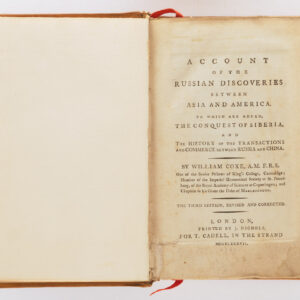An impressive, large-format 1972 Russian-language map honoring the 30th anniversary of the Battle of Stalingrad.
Сталинградская Битва [Battle of Stalingrad 30th Anniversary Commemoration].
Out of stock
Description
This remarkable and highly informative 1972 Russian-language map commemorates the 30th anniversary of the Battle of Stalingrad. As with any act of commemoration, the images and text here tell as much about the contest over memory and the contemporary situation when it was produced as they do the historical event of the battle.
The sheet is roughly divided into three, with a map at left displaying operations from July through November 1942 and a larger map at the right documenting the Soviet counter-attack in November and December 1942. A small inset map at the top-right covers the latter phases of the Soviet counter-attack between January 10 and February 2, 1943.
At the bottom is a photograph of the Mamayev Kurgan hill, which overlooks the city, known for the dramatic statue ‘The Motherland Calls,’ which had only been installed in 1967. Overlying the photo, at the bottom-right, is an extensive legend for the large map at the right of the Soviet counter-attack.
At the bottom left, statistics are provided on the composition of the Soviet forces and their relative size to the German-fascist invaders, emphasizing the contribution of the Communist Party and associated organizations like the Komsomol.
At the top-left, a gold star medal and medal of the Order of Lenin indicate Stalingrad’s status as a Hero City (город-герой) of the Soviet Union, awarded in 1945. At the top-right, in red text, is a quote about the battle from Leonid Brezhnev, General Secretary of the Communist Party of the Soviet Union at the time. Notably absent is any direct reference to the city’s namesake, Joseph Stalin. In 1961, at the peak of De-Stalinization, the city was renamed Volgograd as part of the reduction of Stalin’s cult of personality. Though Brezhnev was less enthusiastic than Khrushchev about De-Stalinization, he would have nonetheless been interested in reducing Stalin’s supposed role in the victory (much trumpeted in wartime propaganda) and instead tying himself to the glorious victory at Stalingrad. Unlike Khrushchev, who was present at Stalingrad, Brezhnev was stationed in the Caucasus, though both men were political commissars rather than soldiers.
The Battle of Stalingrad
The Battle of Stalingrad was arguably the most important in the entire Second World War. Undoubtedly, it marked a humiliating defeat for Germany and the Axis forces while signaling the determination and capabilities of Soviet troops. Aside from being a major industrial center in its own right, Stalingrad also held the key to the southern front; had the Germans captured it, they could have moved on to the Caucasus and the valuable oil reserves there. The city’s symbolic value, being named after Stalin, also made it essential. Therefore, both sides were strongly incentivized to pour troops and resources into the fight.
The battle was characterized by fierce house-to-house fighting in which hundreds of troops might die to capture a single building. The city was almost completely destroyed in the battle. After ferocious and repeated German attacks, the Soviets were pressed in along the banks of the Volga River but held out for weeks as a counter-attack was prepared. With German and other Axis troops primarily drawn into the city, the Soviets launched a pincer movement around the city, encircling the German Sixth Army, which endured a wintertime siege marked by failed relief efforts before surrendering, the most embarrassing German defeat to that point in the war.
Census
This map was produced by the Scientific and Editorial Map Unit of the Main Directorate of Geodesy and Cartography under the Council of Ministers (Главное управление геодезии и картографии; GUGK for short) in Moscow in 1972, in consultation with ‘military history officers’ of the Ministry of Defense. The Senior Editor was Naum Solomonovich Frumkin (Наум Соломонович Фрумкин, 1905 – 1998), a decorated Soviet military intelligence officer who became a military historian in the postwar period. A.G. Kushner (Кушнир А.Г.) also served as an editor, while S.M. Chekankin (Чеканикин С.М.) and V.I. Levakova (Левакова В.И.) were technical editors. ‘Artistic decoration’ was provided by A.A. Nikolaeva (Николаева А.А.).
This map is only noted in the OCLC (5490611) among the holdings of the Library of Congress and the University of Essex. A 1975 edition is held by Harvard University, the University of California Berkeley, the University of Victoria, the University of Arizona, the University of Michigan, the Colorado School of Mines, and the University of Alberta.
Condition Description
Very good.
References
![[Title in Russian] Russian Empire in the 18th Century (European Section)](https://neatlinemaps.com/wp-content/uploads/2020/04/NL-00822_Thumbnail-300x300.jpg)
![[Title in Russian] Russian Empire in the 18th Century (European Section)](https://neatlinemaps.com/wp-content/uploads/2020/04/NL-00822-scaled-300x300.jpg)

![Delimitation de la Zone Occupee [German Occupation of France]](https://neatlinemaps.com/wp-content/uploads/2019/12/NL-00782-scaled-300x300.jpg)
![From the Port of Anapa to Dzhubga Bay, Soviet Navy Nautical Chart [От Порта Анапа до Бухты Джубга]](https://neatlinemaps.com/wp-content/uploads/2022/07/NL-01452_thumbnail-scaled-300x300.jpg)